The pCell technology will attempt to bring the full potential speed of an LTE network to your device

Meet pCell – an innovative cell technology, which promises to bring the maximum potential speed of an LTE network at your disposal. Yes, you got that right! Thanks to pCell, the speed of your wireless service won't suffer when a lot of users share the signal, broadcasted from the same cell.
But how does it work? As you know, cell towers are used to provide users with wireless service. However, each one of these towers creates a signal cell and tries to avoid interfering with another cell's signal. All mobile devices in a given cell's range share its bandwidth and receive just a "fraction of its spectrum capacity" – as a result, the more data-hungry users gather together, the slower the wireless bandwidth becomes.
pCell, on the other hand, uses a radically different approach. It utilizes pWaves – small, inexpensive radiotransmitters that deliberately interfere with each other's signal in order to create a small "personall cell" around each mobile device. Devices with tiny pCells around them receive uninterupted signal coverage and are said to be always getting "full speed, no matter how many people are around you". The pCell technology is compatible with the already existing LTE-enabled mobile devices, which means that these can effortlessly connect to the pCells and benefit from the full spectrum of their wireless service.
The pCell technology is developed by Artemis, a small company, founded by Steve Perlman. Mr. Perlman has been involved with a lot of innovative breakthroughs, such as OnLive, the cloud-based gaming portal. He demonstrated the pCell technology by simultaneously streaming 4K and 1080p Full HD videos in only 10MHz of wireless spectrum on several devices, which were adjacent to each other.
pCell is currently being tested across several areas in San Francisco and its is expected that the first commercial deployment will take place in late 2014.

source: Artemis via Recode
pCell™ Wireless Breakthrough Delivers Fiber-Class Mobile to Everyone, All the Time
No congestion, no dead zones, no weak signals: Mobile always feels like fiber
Developed by Artemis Networks, pCell is compatible with standard LTE devices
such as iPhone™ and Android™ mobile phones
San Francisco, CA – February 19, 2012 – Technology pioneer Steve Perlman, Founder and CEO of Artemis Networks, today unveiled pCell™ technology, a radical new approach to wireless that consistently delivers full-speed mobile data to every mobile device concurrently, regardless of how many users are sharing the same spectrum at once. pCell technology ushers in a new era to mobile, where a ubiquitous fiber-class broadband experience will be delivered at all times to standard LTE devices, such as iPhone and Android mobile phones, eliminating the congestion, dead zones and unreliable connections we’ve come to accept with conventional cellular technology.
Steve Perlman will do a live demonstration of the revolutionary pCell technology at Columbia University in Uris Hall on Wednesday, February 19, at 12:15 PM.
In our increasingly mobile world of smartphones, tablets and connected devices, mobile data demand has skyrocketed, almost doubling in the last yeari and projected to grow more than 25Xii by 2020, far outpacing the physics limitsiii of conventional cellular technology, as the world’s mobile spectrum is exhaustediv. Major metro areas like New York, Chicago, and San Francisco are already experiencing severe mobile congestionv, a bellwether for the relentless “tsunami” of mobile datavi overwhelming mobile networks worldwide.
With existing cellular networks, each tower transmits a radio signal, forming a large cell that carefully avoids interfering with other cells. Mobile devices all share the cell’s capacity, taking turns so they don’t interfere with each other. This worked well until everyone started carrying smartphones and tablets, streaming videos and uploading photos. Taking turns among so many users, each demanding so much data, is slowing cell service to a crawl, despite the addition of more spectrum and small cells and innovations like MIMO and beamforming.
pCell technology turns the entire problem inside out. Instead of dodging interference, pCell exploits interference, combining transmitted radio signals from multiple pCell base stations to synthesize tiny “personal cells”—pCells—of wireless energy around each mobile device. So, rather than hundreds of users taking turns sharing the capacity of one large cell, each user gets an unshared pCell, giving the full wireless capacity to each user at once.
“pCell technology is a complete reinvention of wireless,” said Steve Perlman, Founder and CEO of Artemis Networks, “pCell delivers on the long-sought dream of ubiquitous, fast Internet, with the reliability and consistency previously only achievable through a wired connection. pCell is effectively mobile fiber.”
Whether streaming HD video for long car rides, making a video call from Times Square, posting videos from a packed stadium…or even streaming 4K UltraHD to your big screen TV, pCell delivers consistent, high-speed service wherever you are.
pCell is compatible with standard, unmodified out-of-the box LTE devices, such as iPhone 5S and 5C, Samsung Galaxy S4, LTE dongles and MiFi devices. pCell enables a standard LTE device to run at full LTE speed throughout pCell coverage areas, and wherever pCell is not yet deployed, the device can hand off to conventional cellular, providing seamless coverage.
Wireless carriers and independent ISPs can deploy pCell far faster and at lower cost than conventional cellular. Rather than cell towers, pCell uses simple, discreet pCell base stations, called pWave™ radios, that, rather than having their placement restricted to a cell plan, can be placed anywhere convenient, whether outdoor, indoor, visible or hidden. For example, locations can be chosen where there is free or low-cost rent and backhaul. pCell works in all mobile bands, as well as in unlicensed spectrum, such as 900 MHz in the Americas, sharing spectrum with other unlicensed devices, enabling deployment by both major carriers with licensed spectrum as well as local entrepreneurs using unlicensed spectrum.
“pCell is an authentic ‘moon shot’ disruptive invention, one of those rare but extraordinary moments when what previously seemed improbable in science becomes possible”, said John Sculley, former Apple CEO, “The first time I saw a ‘moon shot’ was in 1982 when Steve Jobs showed me a prototype of the original consumer media computer—the Mac.”
pCell will be licensed to wireless carriers and independent ISPs for deployment worldwide. pCell is currently in trials with partners in San Francisco and will be ready for first commercial deployment in one market at the end of 2014, expanding to major markets in the US, Asia and Europe starting in 2015. The exact deployment schedule in each market will be determined by the carrier and ISP partners. Interested partners can contact Artemis Networks at partners@artemis.com.
pCell is the result of over a decade of R&D by a small, but highly innovative and dedicated team, who has succeeded in overcoming immense theoretical and implementation challenges in order to not only invent an entirely new approach to wireless, but to make it a practical system that can be rapidly deployed in major markets and is compatible with the hundreds of millions of LTE devices in the world.
To find out more about pCell technology, visit www.artemis.com
Contact: press@artemis.com
About Artemis
Artemis Networks LLC (www.artemis.com) is the pioneer of pCell technology, a breakthrough approach to wireless that consistently delivers full-speed data rate to every mobile device concurrently, regardless of how many users are sharing the same spectrum at once. Founded by technology pioneer Steve Perlman in early 2000s, and incubated for over a decade by Steve’s Rearden Companies incubator (www.rearden.com), Artemis is based in San Francisco, California. pCell technology is protected by a broad portfolio of fundamental patents, both US and internationally.
Artemis, Artemis Networks, pCell and pWave are trademarks of Artemis Networks LLC. All other trademarks are the property of their respective owners. Patents and patents pending.
But how does it work? As you know, cell towers are used to provide users with wireless service. However, each one of these towers creates a signal cell and tries to avoid interfering with another cell's signal. All mobile devices in a given cell's range share its bandwidth and receive just a "fraction of its spectrum capacity" – as a result, the more data-hungry users gather together, the slower the wireless bandwidth becomes.
“(The) pCell is the most significant advance in radio wave optimization since Tesla’s 1930s experiments and the birth of analog cellular in the early 1980s. I do not use the word ‘breakthrough’ often. This one deserves it.” - Richard Doherty, an analyst with Envisioneering Group.
The pCell technology is developed by Artemis, a small company, founded by Steve Perlman. Mr. Perlman has been involved with a lot of innovative breakthroughs, such as OnLive, the cloud-based gaming portal. He demonstrated the pCell technology by simultaneously streaming 4K and 1080p Full HD videos in only 10MHz of wireless spectrum on several devices, which were adjacent to each other.
“pCell technology is a complete reinvention of wireless,” stated Steve Perlman. “pCell delivers on the long-sought dream of ubiquitous, fast Internet, with the reliability and consistency previously only achievable through a wired connection. pCell is effectively mobile fiber.”
pCell is currently being tested across several areas in San Francisco and its is expected that the first commercial deployment will take place in late 2014.

source: Artemis via Recode
pCell™ Wireless Breakthrough Delivers Fiber-Class Mobile to Everyone, All the Time
No congestion, no dead zones, no weak signals: Mobile always feels like fiber
Developed by Artemis Networks, pCell is compatible with standard LTE devices
such as iPhone™ and Android™ mobile phones
San Francisco, CA – February 19, 2012 – Technology pioneer Steve Perlman, Founder and CEO of Artemis Networks, today unveiled pCell™ technology, a radical new approach to wireless that consistently delivers full-speed mobile data to every mobile device concurrently, regardless of how many users are sharing the same spectrum at once. pCell technology ushers in a new era to mobile, where a ubiquitous fiber-class broadband experience will be delivered at all times to standard LTE devices, such as iPhone and Android mobile phones, eliminating the congestion, dead zones and unreliable connections we’ve come to accept with conventional cellular technology.
Steve Perlman will do a live demonstration of the revolutionary pCell technology at Columbia University in Uris Hall on Wednesday, February 19, at 12:15 PM.
In our increasingly mobile world of smartphones, tablets and connected devices, mobile data demand has skyrocketed, almost doubling in the last yeari and projected to grow more than 25Xii by 2020, far outpacing the physics limitsiii of conventional cellular technology, as the world’s mobile spectrum is exhaustediv. Major metro areas like New York, Chicago, and San Francisco are already experiencing severe mobile congestionv, a bellwether for the relentless “tsunami” of mobile datavi overwhelming mobile networks worldwide.
With existing cellular networks, each tower transmits a radio signal, forming a large cell that carefully avoids interfering with other cells. Mobile devices all share the cell’s capacity, taking turns so they don’t interfere with each other. This worked well until everyone started carrying smartphones and tablets, streaming videos and uploading photos. Taking turns among so many users, each demanding so much data, is slowing cell service to a crawl, despite the addition of more spectrum and small cells and innovations like MIMO and beamforming.
pCell technology turns the entire problem inside out. Instead of dodging interference, pCell exploits interference, combining transmitted radio signals from multiple pCell base stations to synthesize tiny “personal cells”—pCells—of wireless energy around each mobile device. So, rather than hundreds of users taking turns sharing the capacity of one large cell, each user gets an unshared pCell, giving the full wireless capacity to each user at once.
“pCell technology is a complete reinvention of wireless,” said Steve Perlman, Founder and CEO of Artemis Networks, “pCell delivers on the long-sought dream of ubiquitous, fast Internet, with the reliability and consistency previously only achievable through a wired connection. pCell is effectively mobile fiber.”
Whether streaming HD video for long car rides, making a video call from Times Square, posting videos from a packed stadium…or even streaming 4K UltraHD to your big screen TV, pCell delivers consistent, high-speed service wherever you are.
pCell is compatible with standard, unmodified out-of-the box LTE devices, such as iPhone 5S and 5C, Samsung Galaxy S4, LTE dongles and MiFi devices. pCell enables a standard LTE device to run at full LTE speed throughout pCell coverage areas, and wherever pCell is not yet deployed, the device can hand off to conventional cellular, providing seamless coverage.
Wireless carriers and independent ISPs can deploy pCell far faster and at lower cost than conventional cellular. Rather than cell towers, pCell uses simple, discreet pCell base stations, called pWave™ radios, that, rather than having their placement restricted to a cell plan, can be placed anywhere convenient, whether outdoor, indoor, visible or hidden. For example, locations can be chosen where there is free or low-cost rent and backhaul. pCell works in all mobile bands, as well as in unlicensed spectrum, such as 900 MHz in the Americas, sharing spectrum with other unlicensed devices, enabling deployment by both major carriers with licensed spectrum as well as local entrepreneurs using unlicensed spectrum.
“pCell is an authentic ‘moon shot’ disruptive invention, one of those rare but extraordinary moments when what previously seemed improbable in science becomes possible”, said John Sculley, former Apple CEO, “The first time I saw a ‘moon shot’ was in 1982 when Steve Jobs showed me a prototype of the original consumer media computer—the Mac.”
pCell will be licensed to wireless carriers and independent ISPs for deployment worldwide. pCell is currently in trials with partners in San Francisco and will be ready for first commercial deployment in one market at the end of 2014, expanding to major markets in the US, Asia and Europe starting in 2015. The exact deployment schedule in each market will be determined by the carrier and ISP partners. Interested partners can contact Artemis Networks at partners@artemis.com.
pCell is the result of over a decade of R&D by a small, but highly innovative and dedicated team, who has succeeded in overcoming immense theoretical and implementation challenges in order to not only invent an entirely new approach to wireless, but to make it a practical system that can be rapidly deployed in major markets and is compatible with the hundreds of millions of LTE devices in the world.
To find out more about pCell technology, visit www.artemis.com
Contact: press@artemis.com
About Artemis
Artemis Networks LLC (www.artemis.com) is the pioneer of pCell technology, a breakthrough approach to wireless that consistently delivers full-speed data rate to every mobile device concurrently, regardless of how many users are sharing the same spectrum at once. Founded by technology pioneer Steve Perlman in early 2000s, and incubated for over a decade by Steve’s Rearden Companies incubator (www.rearden.com), Artemis is based in San Francisco, California. pCell technology is protected by a broad portfolio of fundamental patents, both US and internationally.
Artemis, Artemis Networks, pCell and pWave are trademarks of Artemis Networks LLC. All other trademarks are the property of their respective owners. Patents and patents pending.

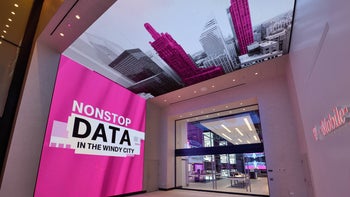
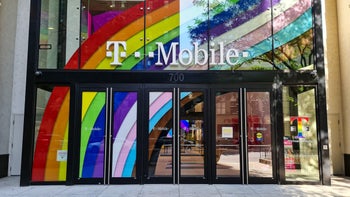
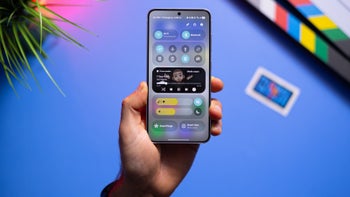

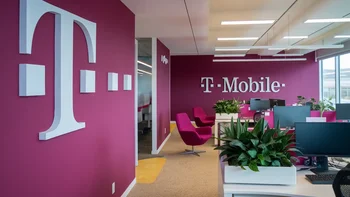
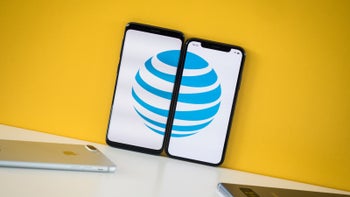
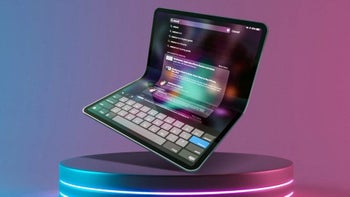
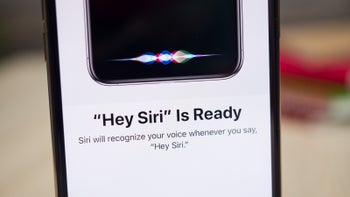
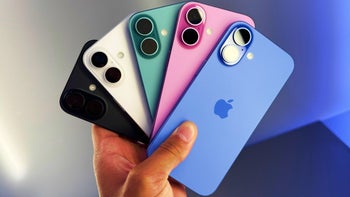
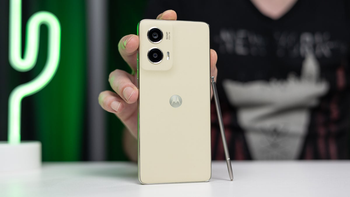

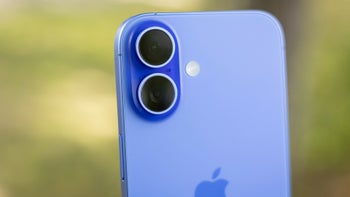
Things that are NOT allowed: